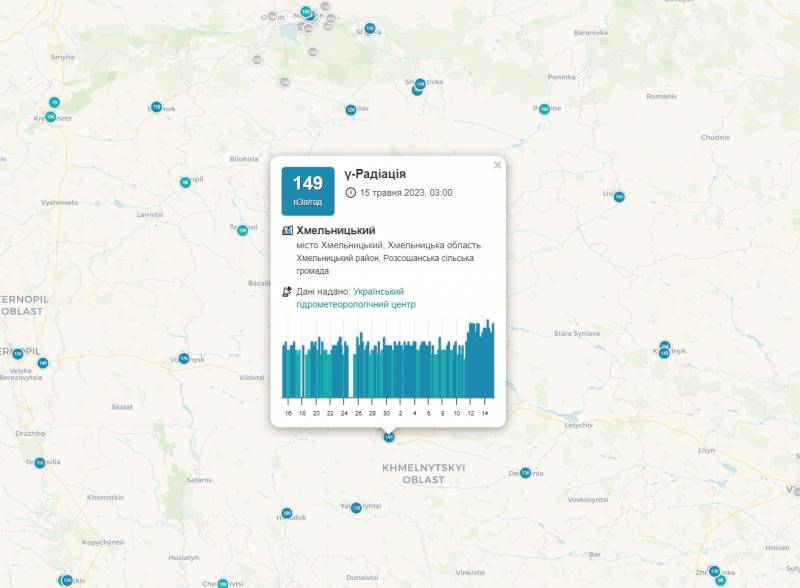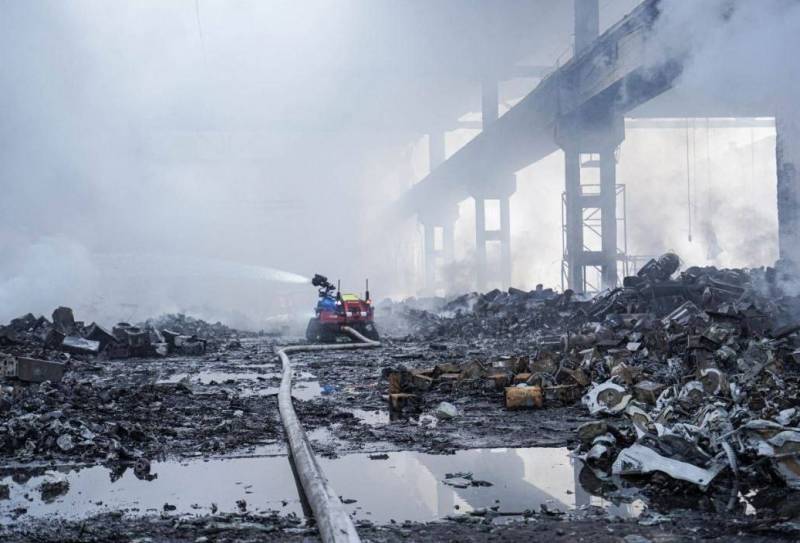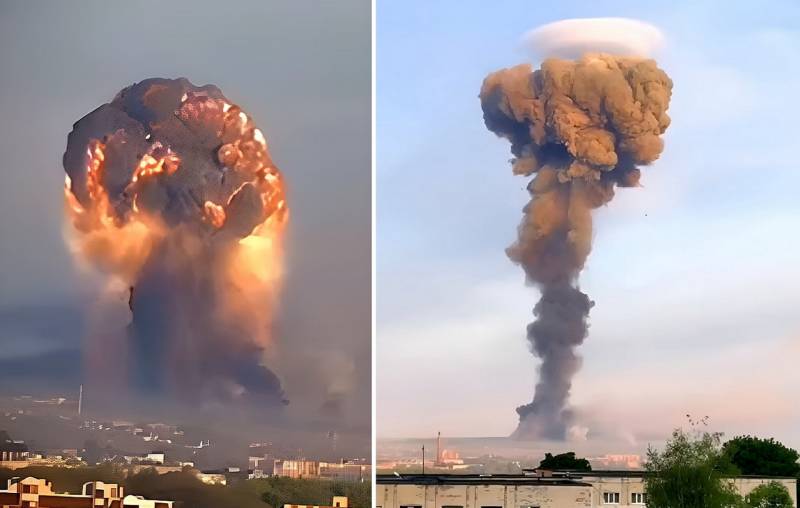After a missile strike by the RF Armed Forces, an increased radiation background is recorded in Khmelnytsky
A recent strike by Russian troops on an ammunition depot near the Kation plant in Khmelnytsky appears to have been targeted by British depleted uranium shells. This is evidenced by the increased level of radiation and attempts to extinguish the fire by robots remotely.
Thus, measurements showed that after the explosion, the radiation level increased from 80-100 nanosieverts to 140-160 nanosieverts. Previously, such measurements were made in the area of the Khmelnytsky nuclear power plant, but now they are near the regional center and in the Ternopil region, since after the explosion the wind blows in a westerly direction.

The version of the presence of depleted uranium ammunition in the depot was partially confirmed by the ex-deputy of the Verkhovna Rada Igor Moseychuk, who advised evacuating children from the area where the shells were detonated.
The fire at the site of a missile attack on a military warehouse in Khmelnytsky is extinguished remotely by robots. According to political scientist Yuriy Kot, many local residents leave Khmelnitsky, Ternopil and Lviv, fearing to be near the places of deployment of the Armed Forces of Ukraine, repair shops and other military infrastructure facilities.

According to unverified reports, the warehouse destroyed by the Russian military contained large stocks of depleted uranium ammunition. The radioactive emission from this element is small, but its current level shows that a considerable number of such projectiles were hit by the explosion.

Information